Discover Rare and Exotic Orchids at Flower Festivals Worldwide
By Jill Brooke

With orchids, it’s all about the lips.
Colorful, luscious, and beautiful are the ones collectors swoon over. These beauties also win prizes at international gatherings such as the annual Tamiami Festival in Miami, Florida, and the many others taking place throughout the year.
There are around 28,000 species of known orchids which are broken down into around 850 small groups called a genus. The lip of an orchid entices pollinators, such as bees, butterflies, or moths. With sparkling colors and intricate patterns, some even mimic the appearance of female insects to attract pollinators as part of their flirtatious repertoire. We do know that flowers are wired to be seductive.
At the annual and popular Tamiami show, a cattleya orchid called Purple Rain won first prize at the Miami festival. The lavender flower frame was lush and sensual and the magenta center tinged with apricot popped with personality and saturated color.
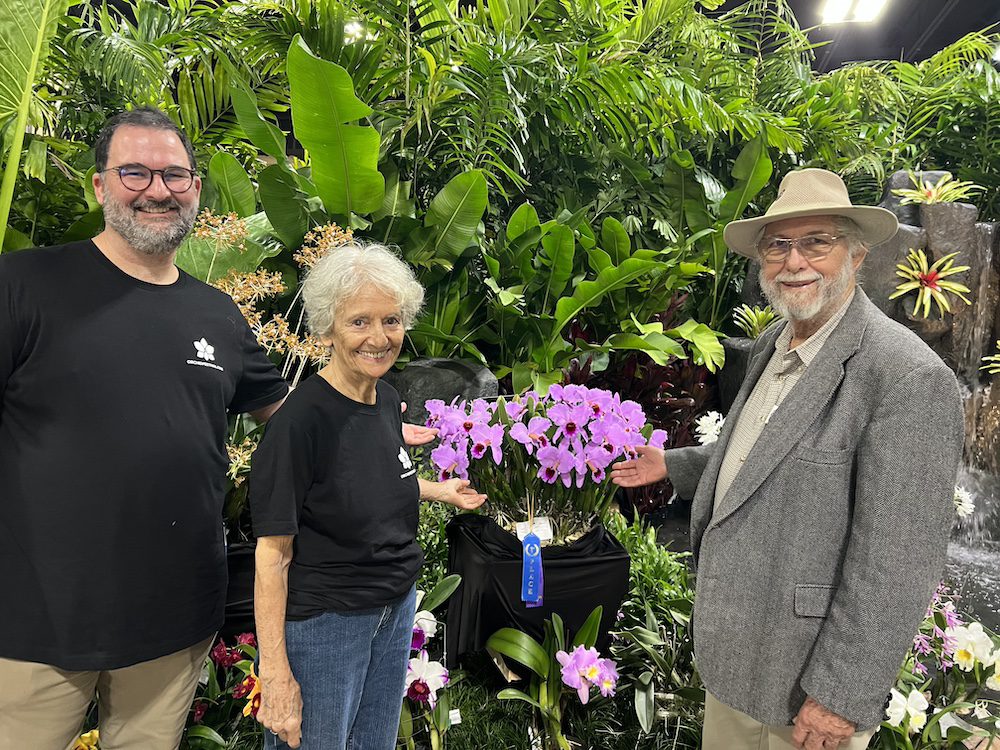
“This cattleya is so big and dramatic and there were so many flowers on the plant,” explains Mary Motes, whose family is famous for not only breeding the rarest orchids in the world but for writing mysteries about them. “The cattleyas are the ones you see in old Fred Astaire movies when people wore corsages.”
Mary’s husband Martin Motes is known internationally for the equivalent of winning the Kentucky Derby in orchids by breeding the first dark black Vanda orchid.
“Can you buy one for breeding?” inquired a visitor.
Martin Motes chuckled and shook his head. “It’s like when you have a racehorse who wins the Derby. You don’t sell the horse, you make money breeding them,” he says, noting that it has taken him almost 50 years to finally find the right hybridization to create this winning and rare orchid.

However, other breeders also try to create versions that to the connoisseur may not be as perfect but are equally as captivating. Lady Vanda Orchids also had a plant at the show for sale and plans on bringing others to other upcoming orchid shows.
“Orchids have a long rich history in books, movies, and murders,” says Jim Davison, who along with his wife Melana are orchid judges and breeders. “Their aesthetic and rarity inspire people to fall in love and it creates passion.”
And we all know what passion can lead to.
In the James Bond 1979 film, “Moonraker,” the villain Hugo Drax develops a lethal nerve gas from the rare Orchidae Nigra, or Black Orchid. In the 1967 movie “You Only Live Twice,” there is a scene where Bond encounters a poison-filled version of the Lady Slipper Orchid. The poison is intended to kill those who touch it. In 2021’s “No Time to Die,” a poison garden was part of the suspense. While those applications were fictional, the movie “Adaptation” was inspired by the book, “The Orchid Thief” about the inside world of collecting.

In fact, the popularization of orchids scattered in every hallway, console, and coffee table harkens back to the designer Halston.
When funds were tight during his early days, his assistant told him to cut down on orchids to save money for the firm. He dismissively replied, that no, that would be impossible. Why? Because the orchids were “part of the process.” These flowers also didn’t have a fragrance which he preferred.
“Orchids were all over his place, both at home and in the office,” says Halston biographer Steven Gaines, whose book the Netflix series “Halston” referenced. “Back then, orchids were really expensive and not plentiful. Only the rich could afford them.” As the late Lee Radziwell said, “If I see an orchid that’s fantastically expensive, I’ll buy it. It’s worth it, for no other reason than it gives me pleasure.”
Halston would spend over $100,000 a year for these rare prized white flowers. Now we can buy them from florists, shows or even Trader Joe’s for under $30.
Halston would get his prized flowers from floral designer Renny Reynolds, of Renny & Reed in New York City and Palm Beach.
Interior decorator Jeffrey Bilhuber added that Halston made orchids “seem not a rarity but a necessity. They looked just amazing – sensuous without being romantic, and floral without being flowery.”
Orchid expert Bartholomew Motes points out that many orchid species actually do have a fragrance.
“Tessellata hybrids, have a very delicate grape-like fragrance and there’s also a vanilla-smelling variety,” he says.
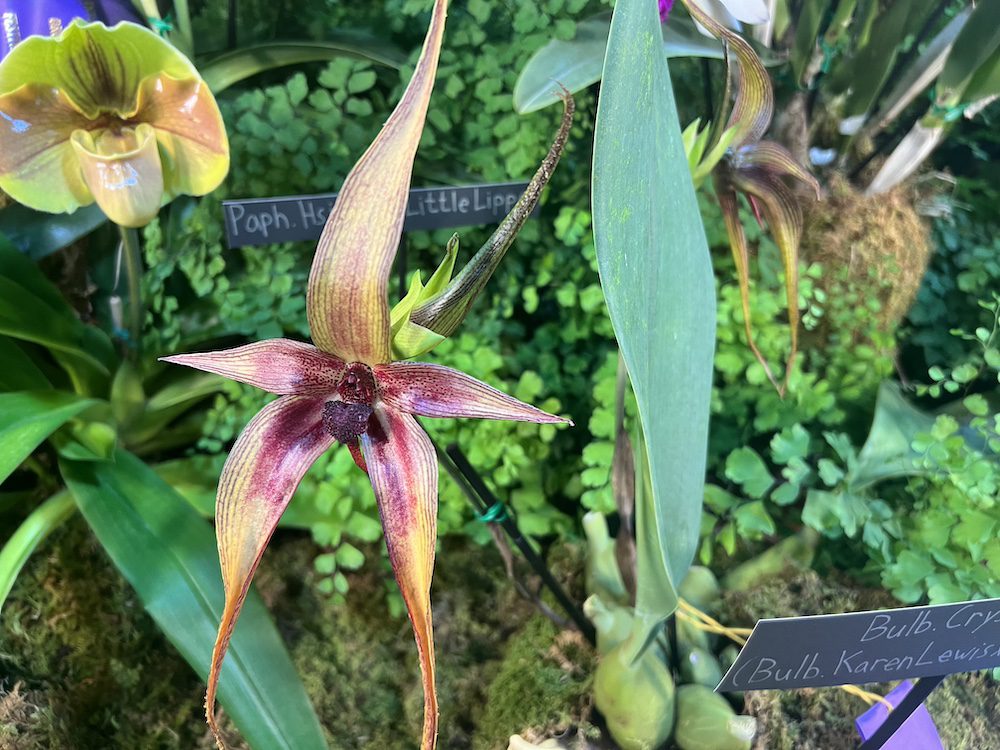
While most do not smell, there was a star-like orchid that did attract a crowd at the annual Tamiami Orchid Festival.
Jim Davison from the American Orchid Society says collectors mischievously gravitate to Bulbophyllums plants that smell like rotting flesh and are similar to the corpse plant. “It’s good to have in your collection for a practical joke,” says Davison. Looking pretty on the outside but being toxic is a flowery cautionary tale.

Lady Slipper Orchids also are big attractions at shows. Orchids with slipper-shaped flowers belong to the orchid subfamily Cypripedioideae. The slipper-shaped lip of these flowers serves a functional purpose in attracting and trapping pollinators just like lips. And yes, these slippers were the inspiration for the James Bond film. They seem to attract both intrigue as well as bugs.
Over at another exhibit, judges Manuel Aybur and Layla Marginata are counting the number of flowers on an orchid stem. Marginata whips out her computer scrolling through past entries of the orchid. “We judge for improvement and look at records from the past 120 years,” says Aybur. Biologist Jason Downing, who is the director of the Fairchild Tropical Botanic Garden explains that experts “look at improvements to recognize and understand the future possibilities of breeding.” “The goal of breeders and hybridizers who create crosses of orchids is to accentuate the beauty of the plant with new forms and colors,” he says. “We also are looking for desirable traits and look at who the parents of the plant are. We can then predict certain behaviors.”
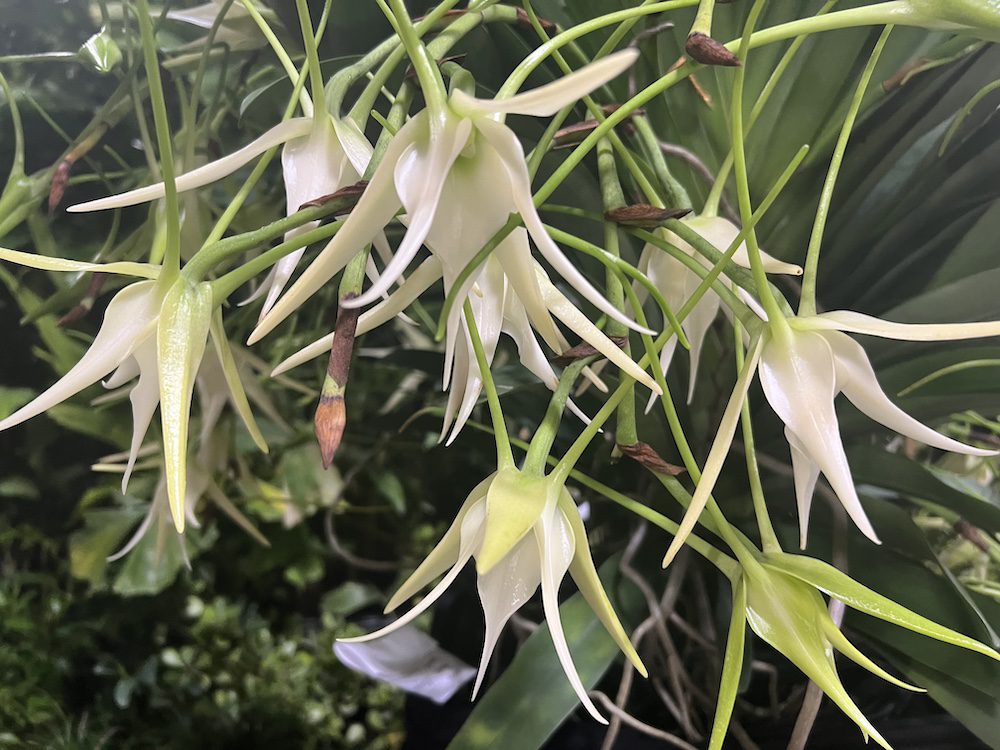
Speaking of parental lineage, science geeks flocked to a version of the Comet Orchid. As orchid judge Jason Gomez explained, this orchid “has the parentage of the Angraecum sesquipedale” which Charles Darwin pondered upon while developing his theory of survival of the fittest.
When Darwin first encountered the orchid native to Madagascar, he predicted that there must be a moth with a proboscis (tongue) long enough to reach the nectar at the bottom of an elongated tube extending from the flower. Sure enough, it wasn’t until after Darwin’s death that the moth was discovered in the dark of night.
In 1903, the moth was named Xanthopan morganii praedicta, with the specific epithet “praedicta” meaning “predicted.” As Gomez shared, this discovery provided empirical support for Darwin’s theory of coevolution and the idea that species can evolve in response to each other over time. The interaction between Darwin’s orchid and its associated moth became a classic example of coevolution in the study of ecology and evolution.
Just last year, Japanese researchers discovered a new genus called Spiranthes hachijoensis, that looks like “it is spun from glass.” Nicknamed “ladies’ tresses” for their resemblance to wavy locks of hair, the new species was growing unexpectedly in parks, gardens, and balconies. As it turns out, the flower is mentioned in Japan’s oldest anthology of poetry which dates to 759.
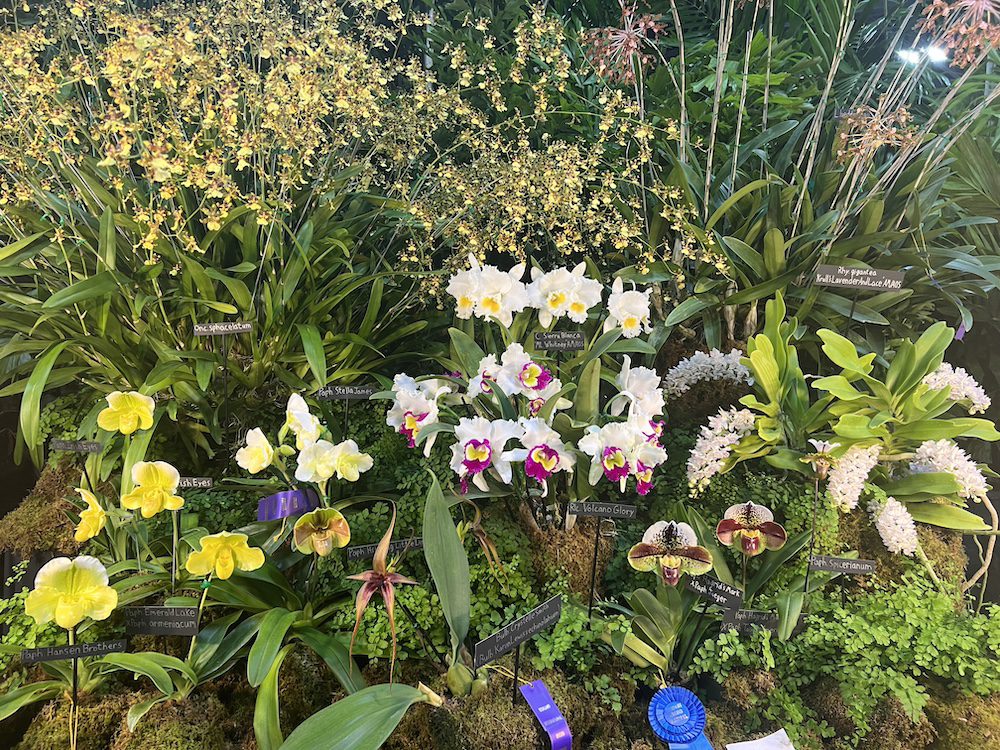
The lesson here is that treasures can be found in familiar environments and even in private gardens and on balconies. Plus, in Florida, where orchids breed naturally and happily, you don’t have to venture into remote tropical rainforests to discover them and become a connoisseur or hobbyist.
For the thousands of people who visit orchid shows around the world, including the New York Botanical Garden’s orchid show, and the Santa Barbara show, the allure is primarily the beauty and the learning opportunities. An added bonus is that these shows are also multi-generational fun.
“My mom took me here because I love plants,” says Rachel Tyson. “It’s mesmerizing to see all these varieties and a nice thing to do together.”
Mesmerizing and addictive. As Susan Orlean wrote in “The Orchid Thief, “When a man falls in love with orchids, he’ll do anything to possess the one he wants. It’s like chasing a green-eyed woman or taking cocaine… it’s a sort of madness.” And of course, it is also a joy.
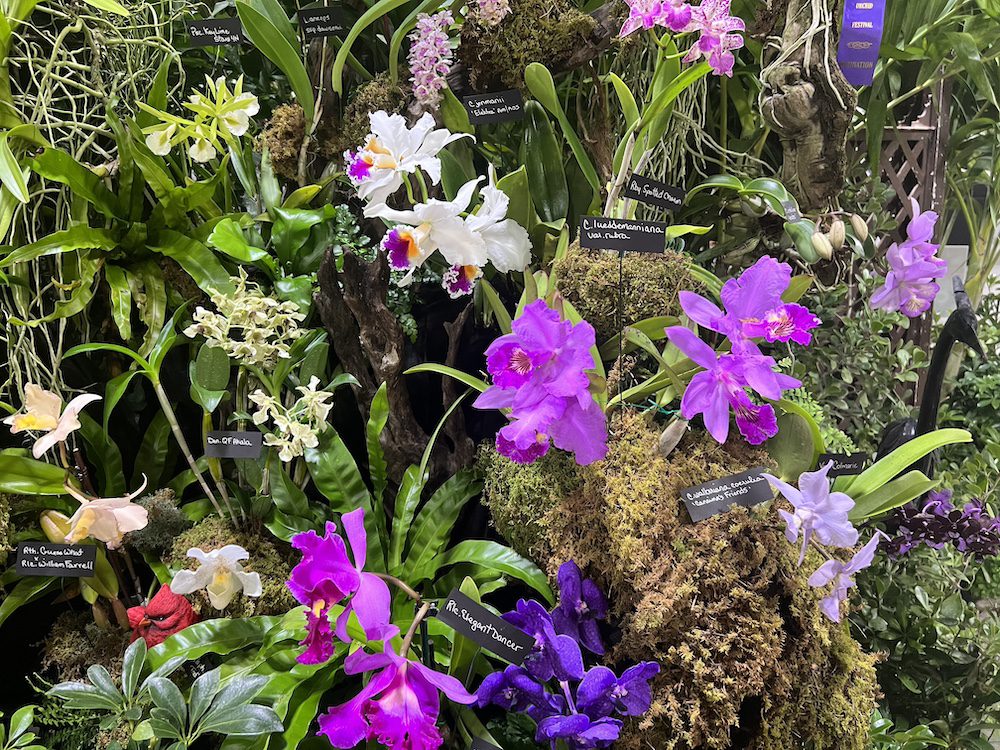
Jill Brooke is a former CNN correspondent, Post columnist and editor-in-chief of Avenue and Travel Savvy magazine. She is an author and the editorial director of FPD and a contributor to Florists Review magazine. She also won the 2023 AIFD (American Institute of Floral Designers) Merit Award for showing how flowers impact history, news and culture
Photo Credit: Jill Brooke, Flower Power Daily
